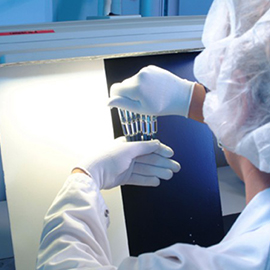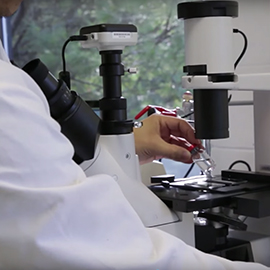A 21st Century Solution
The Identifier Software

InQuest Science has developed a cutting-edge expert data management system for evaluating product defect issues along with providing training and guidance on particulate matter control, optimized inspection and 21CFR part 11 compliant electronic particulate and physical container/closure defect tracking systems. Focusing on Parenteral, Ophthalmic and Medical Device manufacturing to achieve a robust product lifecycle knowledge and control basis.
These modular based data management and monitoring systems are designed to assure routine particulate and defect control compliance for raw materials, API, incoming single use materials, primary components, 100% in-process inspection and AQL inspection meeting USP<1790>, USP<790>, USP<771, USP<787>, USP<788> and USP<789> requirements.
In Addition, we have developed logical control processes for inspector training and qualification standards management which is unsurpassed in the industry. All this, in conjunction with the appropriate forensics for defect identification and CAPA remediation leads to a high degree of sophistication in day to day process monitoring for companies of all sizes.

Regulatory gaps or assessment points by the FDA, bridged by The Identifier Software:
- Consolidate multi-sourced data electronically from all departments to allow quality assurance management oversight, and to view the full upstream product prior to releasing or rejecting batches.
- Monitor each functional area in the manufacturing train to recognize drift or inconsistencies that may lead to a batch recall.
- Facilitate historical evaluation of inspection or defect testing data to establish realistic control limits. Produce routine SPC or annual product reports for 100% and AQL defect testing, and sub-visible or destructive particulate matter testing.
- Provide a master defect library (photos and descriptions) expected by regulators.
- Maintain a secure (blinded) repository of actual defect standards and test sets. Required for the inspection training and qualification assessments of manual or automated methods.
- Manage qualification data and schedule periodic challenge testing for visual inspectors or vision inspection systems.
- Automate the documentation of manual inspection station setup and system suitability of automated vision systems.
- Provide a simplified mechanism for documenting rejected product characterization to analyze the predominant defects and define action plans for mitigation.
- Capture images and information on particulate matter identification in a standardized three step approach, (levels: 1 (In-situ), 2 (Microscopic), 3 (Spectroscopic).
Advantages of the InQuest Science Identifier Defect Management System over MES
The InQuest Science Identifier (ISI) defect management system offers several advantages over using larger Manufacturing Execution Systems (MES) for parenteral visual inspection test set management, training, and qualification of visual inspectors and vision systems.
- Specialized Expertise: The ISI defect management system is specifically designed by subject matter experts (SMEs) for pharmacopeial parenteral visual inspection, which requires a high level of precision and expertise. It focuses on the unique challenges and extensive requirements of visual inspection in the global pharmaceutical industry, allowing for more specialized and in-depth workflows that the broader MES systems can’t effectively provide.
- Enhanced Accuracy: The ISI system leverages a digital defect library that contains detailed information about various particulate and physical defects found in parenteral products. This specialized knowledge helps in accurately identifying and classifying defects during the routine inspection process, leading to improved accuracy and reduced false positives or negatives.
- Training and Qualification: ISI provides comprehensive support for training and qualification of visual inspectors and vision systems. It offers targeted training with defect challenge test sets specifically tailored for visual inspection in the pharmaceutical industry, ensuring that inspectors are equipped with the necessary skills and knowledge to meet FDA expectations. The system also facilitates the qualification process, enabling efficient evaluation and documentation of inspector or vision system performance.
- Efficient Defect Management: The ISI is a modular system that streamlines the defect management process by providing a centralized platform for recording, tracking, and analyzing visual inspection data. This includes calibration and control of visual inspection test sets, monitoring of training or requalification progress, automated recording of documented testing and qualification of inspection procedures. It offers advanced reporting and analytics capabilities specific to visual inspection, allowing for effective defect trending, root cause analysis, and continuous process improvement.
- Integration Flexibility: While larger Manufacturing Execution Systems (MES) may have a broader range of functionalities, they may lack the depth and specialization required for extensive visual inspection processes. The ISI system can be seamlessly integrated with MES or other manufacturing information systems, leveraging the strengths of both platforms. This integration flexibility ensures that the ISI system can work in harmony with existing manufacturing processes while providing specialized workflows.
- Regulatory Compliance: Visual inspection detection test sets and demonstrated inspection qualification are critical aspects of global pharmaceutical manufacturing, and regulatory agencies have specific requirements regarding defect management and inspection processes. The ISI defect management system is designed to meet these regulatory standards, providing documentation and audit trails to support compliance efforts aligned with USP-790, USP-1790 guidance and world-wide expectations.
benefits of The Identifier Software
- Inspection and Defect Data Management maintains data integrity and the tracking of key quality metrics.
- A master library of defect photos and descriptions. Criticality is necessary for training and process troubleshooting.
- Maintenance of inspection test standards and qualification of visual inspectors or automated vision systems generates considerable amounts of data and documentation.
- Provides simplified data management needed to maintain these regulatory requirements.